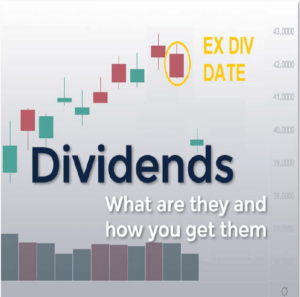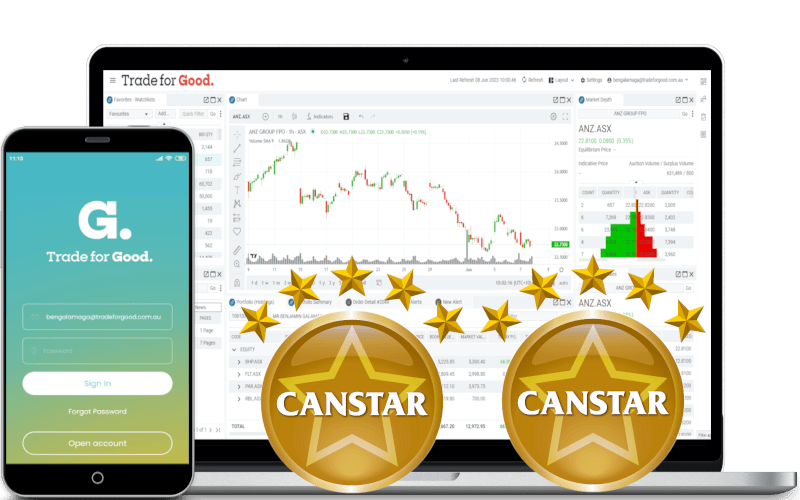
What Is a Dividend?
A dividend is the distribution of a company’s earnings to its shareholders. Dividends are often distributed quarterly and may be paid out as cash or in the form of reinvestment in additional stock.
The dividend yield is the dividend per share and is expressed as dividend/price as a percentage of a company’s share price, such as 2.5%.

Why Do Companies Pay Dividends?
Dividend payments reflect positively on a company and help maintain investors’ trust. A high-value dividend can indicate that the company is doing well and has generated good profits.
A reduction in dividend amounts may mean they have a plan for investing in high-return project with long-term returns.

Dividend-Paying Companies
Larger, established companies with predictable profits are often the best dividend payers, they normally fall in these industry sectors:
- Basic materials
- Oil and gas
- Banks and financial
- Healthcare and pharmaceuticals
- Utilities

Important Dividend Dates
- Announcement date: the date when dividends are announced by company.
- Ex-dividend date: the date on which dividend eligibility expires is called the ex-dividend date, or simply the ex-date.
- Record date: is the cut-off date when shareholders are eligible to receive a dividend or distribution.
- Payment date: the company issues the dividend payment on the payment date.

How to find important dates for Dividend Investing
Watchlist
In the watchlist, in the Code column.
 Look for these codes:
Look for these codes:
- XD – ex-dividend
XD first displays for a security from the morning of the ex-dividend date (generally one business day before the record date) and remains until the close of trading on the date payable. Trading in securities displaying XD on ASX Trade does not carry the entitlement to the dividend payment. For more information refer to the description of cum dividend. All orders are purged at the end of the trading day prior to the security being quoted on an XD basis. - CD – cum dividend
A company has declared an amount per security which will be provided to shareholders in the form of a dividend. Securities trade on the basis that the securities carry an entitlement to the next dividend payable by the Issuer. The purchaser of securities cum dividend is entitled to the dividend. Securities are traded on a cum dividend basis until the ex dividend date.
For all the Codes: ASX Codes used in trading
Fundamentals
In the Fundamentals, click on the 3 dashes in the top left corner, Fundamentals, then Statistics.

Look in the Dividends & Splits section for the historical payouts and Ex-Dividend for dates.

How Do Dividends Affect a Stock’s Share Price?
Dividend payments impact share price and the price may rise on the announcement by approximately the amount of the dividend declared and then decline by a similar amount at the opening session of the ex-dividend date.
Franking Credits
A franking credit, is a tax credit paid by the corporation, it’s a type of tax credit paid the shareholders along with their dividend payments.
Franking credits are paid proportionally to the investor’s tax rate. In Australia, to qualify for franking, the investor must hold the stock for 45 days in addition to the purchase and sale date to qualify for a franking credit.

The Bottom Line

You can download the offline guide here Dividends what are they and how to use them Guide

What you learn here has been used in our Trade for Good software.
Click on the button to find our software education videos.
You can read more of our educational articles in the Trade for Good Learn section
Trade for Good Learn



